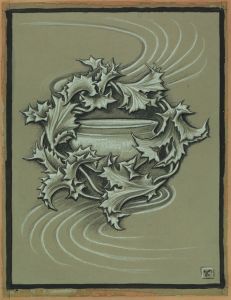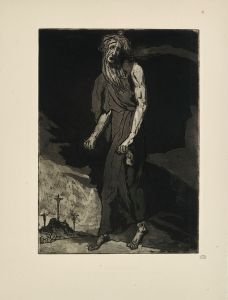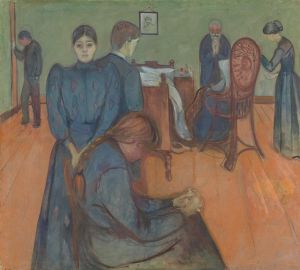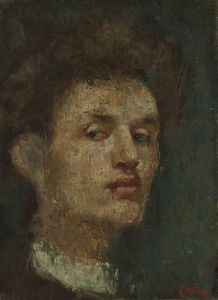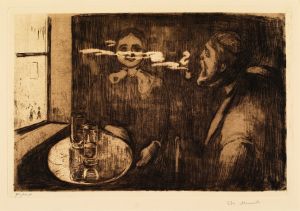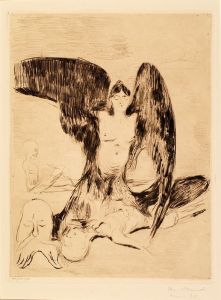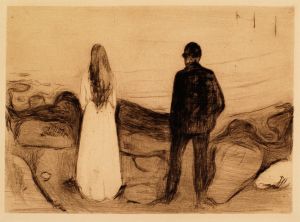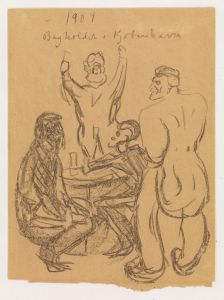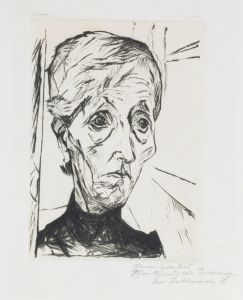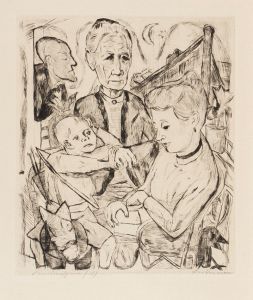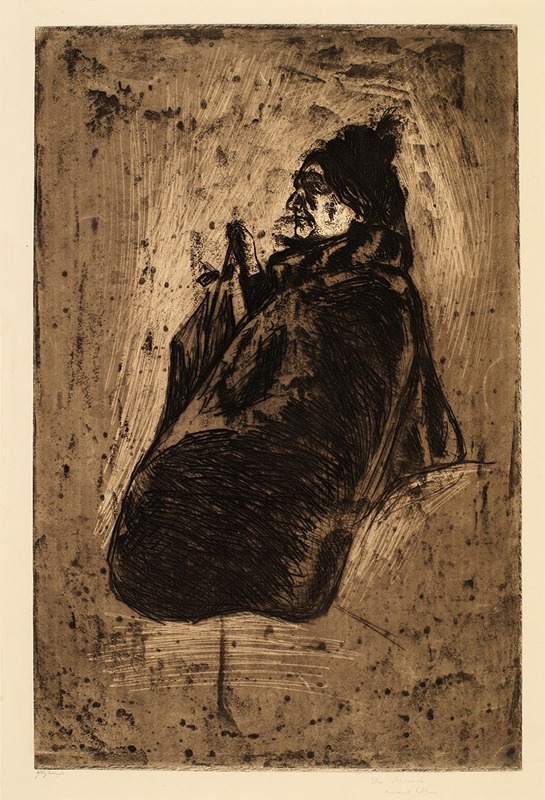
Old Woman
A hand-painted replica of Edvard Munch’s masterpiece Old Woman, meticulously crafted by professional artists to capture the true essence of the original. Each piece is created with museum-quality canvas and rare mineral pigments, carefully painted by experienced artists with delicate brushstrokes and rich, layered colors to perfectly recreate the texture of the original artwork. Unlike machine-printed reproductions, this hand-painted version brings the painting to life, infused with the artist’s emotions and skill in every stroke. Whether for personal collection or home decoration, it instantly elevates the artistic atmosphere of any space.
Edvard Munch, the renowned Norwegian painter and printmaker, is best known for his emotionally charged and symbolist works, such as The Scream. Among his extensive body of work, Old Woman is one of his lesser-known paintings. This artwork reflects Munch's ongoing exploration of human emotion, mortality, and the passage of time, themes that are central to much of his oeuvre.
Old Woman depicts an elderly woman, rendered in Munch's characteristic expressive style. The painting captures the physical and emotional weight of aging, with the figure's posture, facial expression, and surroundings contributing to a somber and introspective mood. Munch often used his art to delve into universal human experiences, and this piece is no exception, as it portrays the inevitability of aging and the solitude that can accompany it.
The exact date of the painting is not definitively documented, but it is believed to have been created during the late 19th or early 20th century, a period when Munch was deeply engaged in exploring themes of existential anxiety and the human condition. This timeframe aligns with his broader artistic development, which was influenced by Symbolism and early Expressionism. Munch's works from this era often feature bold, simplified forms and a vivid, sometimes unsettling use of color, elements that are likely present in Old Woman.
As with many of Munch's works, the identity of the subject in Old Woman is not explicitly known. It is unclear whether the figure was based on a specific individual or intended as a more generalized representation of old age. Munch frequently drew inspiration from his own life and the people around him, but he also sought to convey universal emotions and experiences, making it difficult to determine the precise origins of the figure in this painting.
The painting is part of Munch's broader body of work that examines the human lifecycle, including birth, love, illness, and death. These themes are recurrent in his art and are often depicted with a raw emotional intensity that resonates with viewers. While Old Woman may not be as widely recognized as some of Munch's other works, it remains a poignant example of his ability to capture the complexities of human existence.
Further details about the painting, such as its current location or provenance, are not widely documented in public sources. As a result, Old Woman remains a somewhat enigmatic piece within Munch's extensive catalog, offering viewers a glimpse into his meditations on aging and the passage of time.





